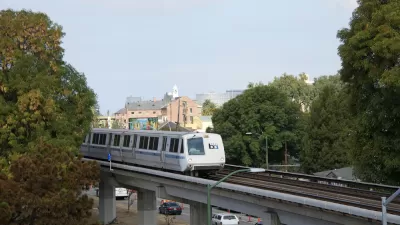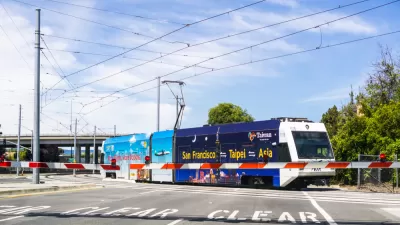Strapped for cash and faced with rapidly declining ridership, the Valley Transportation Authority (VTA) is reorganizing its service in the hopes of stopping the bleeding.

[Updated 5/8/2017]
Gary Richards reports from the South Bay Area:
Faced with a $21.4 *million operating shortfall and a staggering loss of riders, the Valley Transportation Authority on Thursday is expected to approve major changes to its bus and light rail routes, focusing on more service on San Jose’s east side and downtown and reducing its reach in outlying areas like Gilroy and the west valley.
The article includes a rundown of the various causes of VTA's woes, from low gas prices, to delayed transit services, and cannibalization of transit ridership by transportation network companies like Uber and Lyft. All those anti-transit forces are succeeding despite a robust economy and the worsening congestion that results.
For more info on the details of the changes to VTA service, see an announcement requesting public comment on the Transit Service Redesign Draft Plan, as released in January 2017, along with previous articles for the Mercury News by Julia Baum in March and Gary Richards in January.
[The story was corrected to state the correct dollar total for the agency's operating shortfall.]
FULL STORY: VTA to approve massive transit changes

Planetizen Federal Action Tracker
A weekly monitor of how Trump’s orders and actions are impacting planners and planning in America.

Chicago’s Ghost Rails
Just beneath the surface of the modern city lie the remnants of its expansive early 20th-century streetcar system.

San Antonio and Austin are Fusing Into one Massive Megaregion
The region spanning the two central Texas cities is growing fast, posing challenges for local infrastructure and water supplies.

Since Zion's Shuttles Went Electric “The Smog is Gone”
Visitors to Zion National Park can enjoy the canyon via the nation’s first fully electric park shuttle system.

Trump Distributing DOT Safety Funds at 1/10 Rate of Biden
Funds for Safe Streets and other transportation safety and equity programs are being held up by administrative reviews and conflicts with the Trump administration’s priorities.

German Cities Subsidize Taxis for Women Amid Wave of Violence
Free or low-cost taxi rides can help women navigate cities more safely, but critics say the programs don't address the root causes of violence against women.
Urban Design for Planners 1: Software Tools
This six-course series explores essential urban design concepts using open source software and equips planners with the tools they need to participate fully in the urban design process.
Planning for Universal Design
Learn the tools for implementing Universal Design in planning regulations.
planning NEXT
Appalachian Highlands Housing Partners
Mpact (founded as Rail~Volution)
City of Camden Redevelopment Agency
City of Astoria
City of Portland
City of Laramie




























